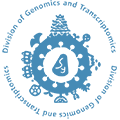Probe-based target enrichment improves ChIP-seq analysis of HIV-1 and HTLV-1 provirus

Retroviruses, like HIV-1 and HTLV-1, integrate DNA copies of their genomes directly into the host cells’ genomic DNA, forming a provirus. Integration allows these proviruses to coopt the molecular machinery of host cells to produce more virus, but the proviruses are subject to the same epigenetic factors that regulate non-viral genes on that chromosome. Understanding the regulation of transcription of these proviruses is valuable to both basic research and treatment of retroviruses that cause life-threatening illness.
Chromatin immunoprecipitation followed by massively parallel sequencing (ChIP-seq) has the potential to be an excellent tool for understanding the regulation of provirus transcription. However, these proviruses are only ~9 kb, integrated within the ~3 billion bp human genome. Performing detailed expression analysis on such a small proportion of the total DNA requires further enrichment of the target sequences beyond the ChIP enrichment.
To achieve this, we designed biotinylated target capture probes against the most frequent HIV-1 and HTLV-1 subtypes prevalent in Japan. Then, we perform targeted enrichment on the samples with the relevant probe set after preparing the sequencing library samples.
Analysis performed on non-enriched ChIP samples showed that >99.99% of the reads were of the host genome and not useful for provirus analysis. However, with the probe-based, targeted enrichment, we were able to increase the provirus reads several hundred to several thousand fold over non-enriched samples. We also found that the data for the enriched libraries correlate well with the non-enriched ones, indicating that probe-based enrichment does not introduce any bias.
Thus, we conclude that this probe-based, targeted enrichment method improves analysis of provirus sequences within the genomic context. Furthermore, the probes are easily customizable for the provirus sub-types and reduces the cost of performing deep sequencing runs. We believe that this method of probe-based provirus enrichment should be useful for other applications as well.
[Journal Information]
Title : Application of targeted enrichment to next-generation sequencing of retroviruses
integrated into the host human genome
Journal: Scientific Reports
